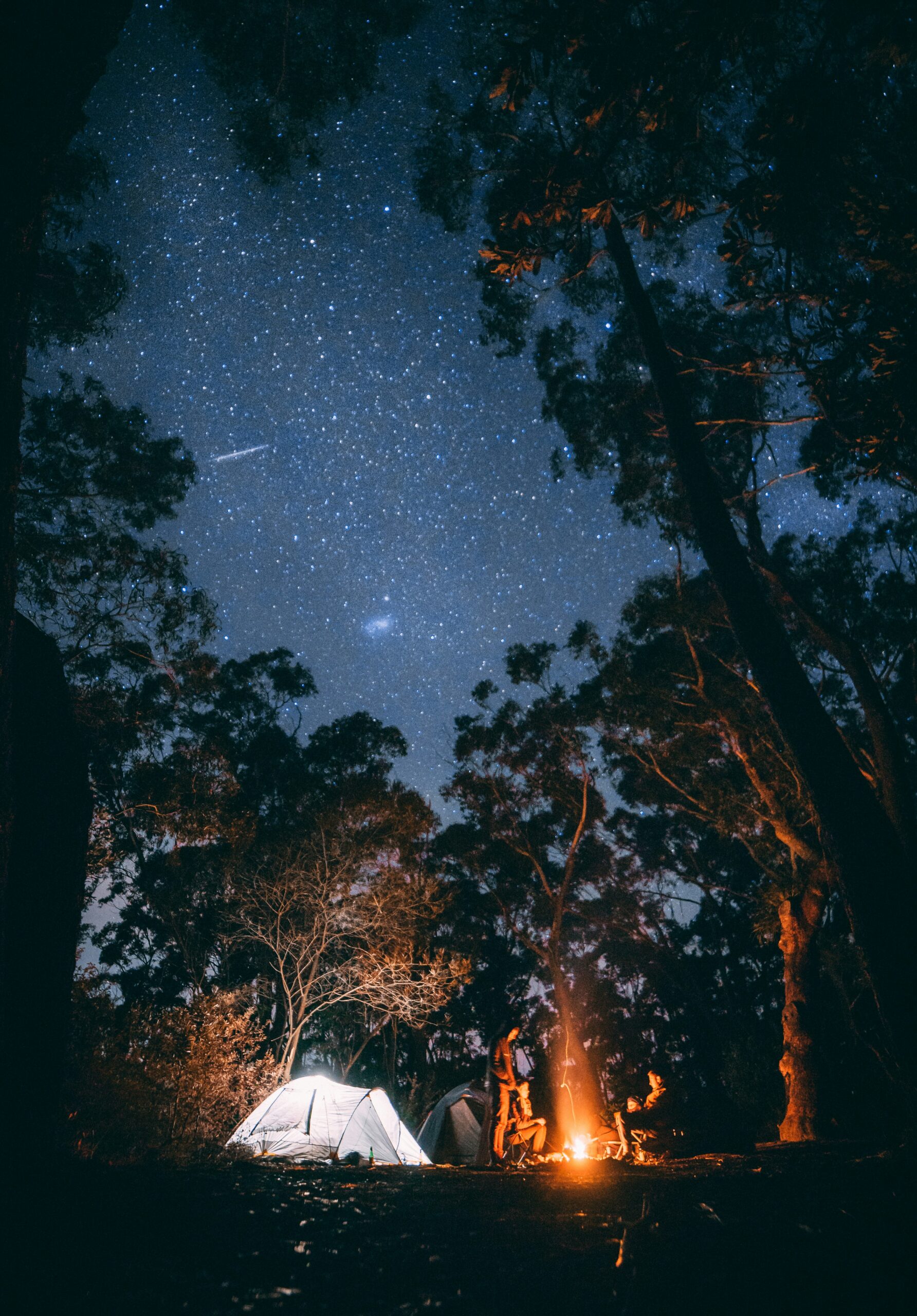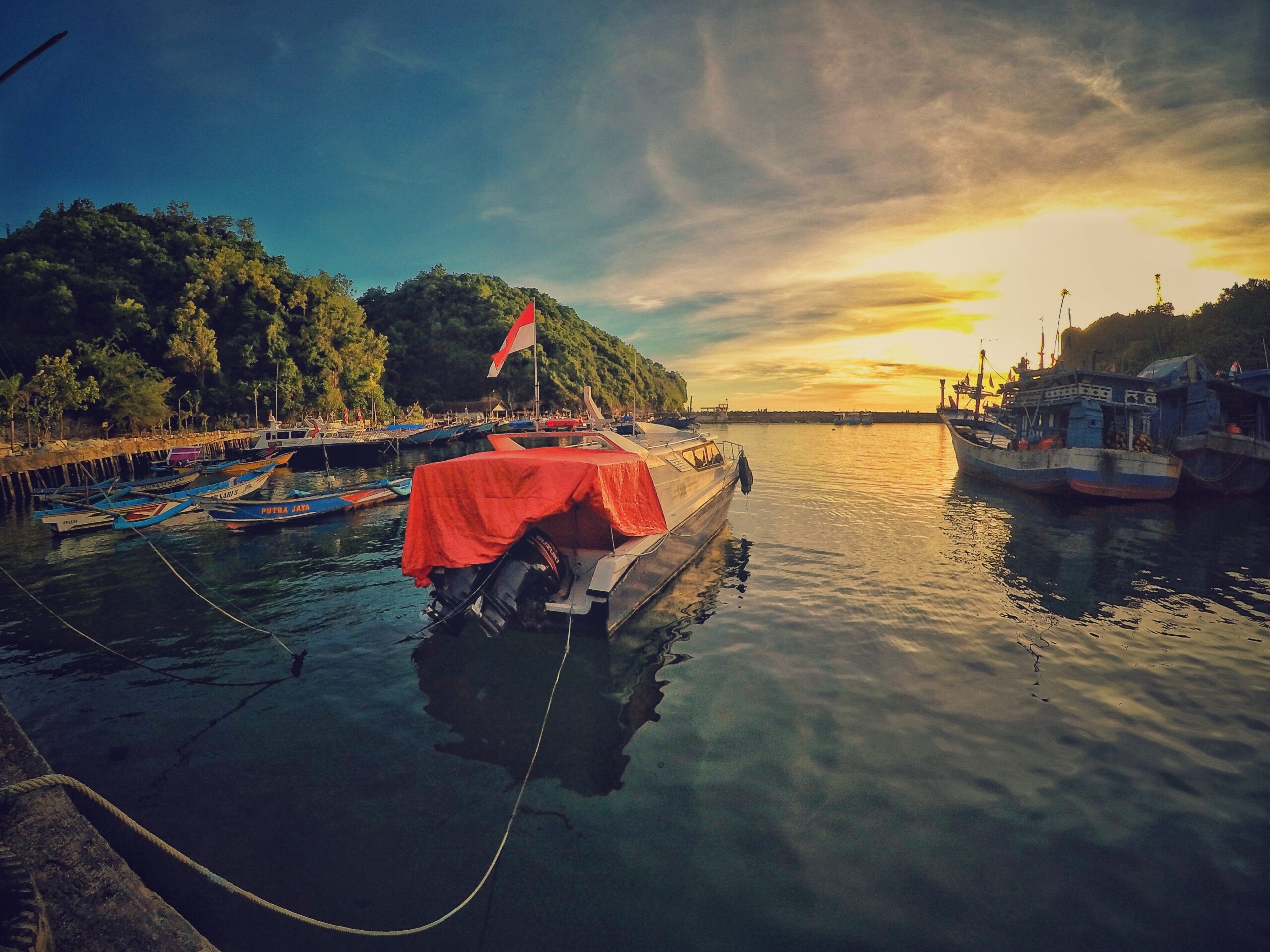Introduction to Camping in New Zealand
New Zealand stands out as a premier destination for camping enthusiasts, offering an array of breathtaking landscapes and diverse natural environments. From pristine beaches to majestic mountains and lush forests, every corner of this island nation promises an unforgettable outdoor experience. The unique appeal of camping in New Zealand lies in its ability to cater to a variety of preferences, whether it’s pitching a tent by a serene lakeside, setting up camp amidst verdant woodlands, or finding refuge in the rugged terrains of its mountainous regions.
The country’s strong culture of outdoor adventure is deeply embedded in its identity, making camping not just an activity, but a way of life. Both locals and tourists are drawn to the freedom and simplicity that camping offers. For many New Zealanders, weekends and holidays often mean escaping to a favorite campsite, reconnecting with nature, and enjoying activities like hiking, fishing, and star-gazing. This love for the outdoors is mirrored by the increasing number of international visitors who seek to explore New Zealand’s natural beauty through camping.
Moreover, New Zealand is well-equipped to support camping activities. The Department of Conservation (DOC) manages numerous campsites that are strategically located across the country, ensuring that campers have access to basic amenities without compromising the natural experience. These campsites range from fully serviced ones with facilities such as hot showers and cooking areas to more basic, remote sites that offer a true wilderness experience.
Overall, camping in New Zealand is not just about the act of camping itself; it’s about embracing a lifestyle that values nature, adventure, and the great outdoors. Whether you are a seasoned camper or a novice looking to embark on your first camping trip, New Zealand’s vast and varied landscapes provide the perfect backdrop for an adventure of a lifetime.
Best Time to Camp in New Zealand
New Zealand offers a diverse range of camping experiences throughout the year, but the best time to camp largely depends on your preferences and the specific regions you wish to explore. Generally, the peak camping season in New Zealand is during the summer months of December to February. During this period, the weather is warm and sunny, making it ideal for outdoor activities and exploring the country’s picturesque landscapes.
The North Island experiences mild winters and warm summers, with temperatures ranging from 14°C to 28°C during the summer months. This makes it a perfect destination for beach camping and water activities. In contrast, the South Island tends to have more extreme weather conditions, with cooler temperatures and occasional snowfall in the mountainous areas. Summer in the South Island sees temperatures ranging from 10°C to 25°C, ensuring comfortable camping conditions and stunning scenery.
Camping during the shoulder seasons of spring (September to November) and autumn (March to May) can also be quite rewarding. These periods offer milder weather, fewer tourists, and often lower campsite fees. Spring brings blooming flowers and lush greenery, while autumn showcases vibrant foliage. However, it’s essential to be prepared for variable weather conditions, as these transitional seasons can bring sudden changes in temperature and rainfall.
Regardless of the season, it’s crucial to be well-prepared for New Zealand’s unpredictable weather. Packing layers of clothing, waterproof gear, and a reliable tent can ensure a comfortable camping experience. Additionally, always check the weather forecast before embarking on your trip and be ready to adapt your plans if necessary.
In summary, while summer is the most popular time for camping in New Zealand due to its favorable weather, the shoulder seasons of spring and autumn also offer unique and enjoyable experiences. By being well-prepared and informed about the regional climates, you can make the most of your camping adventure in this beautiful country.
Top Camping Destinations in New Zealand
New Zealand boasts a plethora of stunning camping destinations scattered across both the North and South Islands. Each location offers unique landscapes, diverse wildlife, and a variety of outdoor activities that make camping a memorable experience. Here, we explore some of the top camping spots that should be on every camper’s list.
Abel Tasman National Park
Situated at the north end of the South Island, Abel Tasman National Park is renowned for its golden beaches, crystal-clear waters, and lush native forests. Campers can choose from several Department of Conservation (DOC) campsites that provide basic facilities such as toilets and water. The park is accessible via water taxi, kayak, or on foot from nearby towns like Marahau and Kaiteriteri. Popular activities include hiking the Abel Tasman Coast Track, kayaking along the coastline, and wildlife spotting, including seals and various bird species.
Fiordland National Park
Fiordland National Park, located in the southwestern corner of the South Island, is a UNESCO World Heritage site known for its dramatic landscapes, deep fiords, and cascading waterfalls. The park offers multiple DOC campsites, with some only accessible by boat or hiking. Milford Sound and Doubtful Sound are must-visit areas within the park, offering scenic cruises and challenging hiking trails like the Milford Track and Routeburn Track. Nearby attractions include the Te Anau Glowworm Caves and the town of Te Anau, which serves as a gateway to the park.
Bay of Islands
On the North Island, the Bay of Islands is a haven for campers seeking a mix of coastal beauty and historical significance. This area features over 140 subtropical islands, making it ideal for water activities such as sailing, fishing, and snorkeling. Campers can stay at various holiday parks and DOC campsites, which provide amenities ranging from basic to fully equipped facilities. Key attractions include the Waitangi Treaty Grounds, where New Zealand’s founding document was signed, and the charming town of Russell, known for its historic buildings and vibrant arts scene. The Bay of Islands is easily accessible by car from Auckland, making it a popular getaway for both locals and tourists.
Each of these destinations offers a unique camping experience, showcasing the diverse natural beauty and outdoor opportunities that New Zealand has to offer. Whether you prefer coastal adventures, serene forests, or dramatic mountain landscapes, there’s a perfect campsite waiting for you in New Zealand.
Types of Camping in New Zealand
New Zealand offers a diverse array of camping experiences catering to different preferences and levels of comfort. From the simplicity of tent camping to the luxury of glamping, there is something for everyone. Understanding the various types of camping available will help you choose the option that best suits your needs.
One popular option is freedom camping, which allows you to camp outside of designated campgrounds, often in scenic and remote locations. While it provides a sense of adventure and the freedom to explore less crowded areas, it comes with stringent regulations to protect the environment. Campers must adhere to the “leave no trace” principle and ensure their vehicles are self-contained, meaning they have a toilet, waste water storage, and rubbish facilities. Non-compliance can result in hefty fines.
Holiday parks are another common choice, offering a range of amenities such as clean restrooms, hot showers, kitchens, and laundry facilities. These parks are ideal for families or those seeking a bit more comfort and convenience. Additionally, holiday parks often provide powered sites for campervans and spaces for tents, making them a versatile option for various camping styles.
The Department of Conservation (DOC) operates numerous campsites across New Zealand, many located in areas of natural beauty such as national parks and reserves. DOC campsites range from basic, with minimal facilities, to more developed sites with toilets, water, and cooking shelters. Staying at a DOC campsite supports conservation efforts and provides a more immersive experience in New Zealand’s stunning landscapes.
Private campgrounds offer another alternative, typically combining the amenities of holiday parks with unique settings and sometimes additional activities such as farm tours or adventure sports. These campgrounds can provide a more personal touch and often cater to specific interests or demographics.
Choosing the best type of camping in New Zealand depends on your preferences, level of comfort desired, and the kind of experience you seek. Whether you prefer the rugged freedom of off-grid camping or the convenience of well-facilitated holiday parks, New Zealand’s diverse options ensure an unforgettable adventure for every camper.
Essential Camping Gear and Equipment
Proper preparation is vital for a successful camping trip in New Zealand, where the diverse landscapes and unpredictable weather can present unique challenges. Ensuring you have the right camping gear and equipment will not only enhance your experience but also ensure your safety. Below is a comprehensive packing list and recommendations to help you prepare for your adventure.
Tents and Sleeping Bags
A reliable tent is the cornerstone of any camping trip. When camping in New Zealand, consider a four-season tent to withstand varying weather conditions, from coastal breezes to alpine chills. Look for features such as a robust rainfly, sturdy poles, and adequate ventilation. Popular brands like MSR, Marmot, and Black Diamond offer durable options suitable for New Zealand’s environment.
Equally important is a high-quality sleeping bag. Opt for one with an appropriate temperature rating for your destination. Down sleeping bags provide excellent warmth-to-weight ratios, while synthetic options offer better moisture resistance and affordability. Brands like The North Face and Therm-a-Rest offer reliable choices for different climates.
Cooking Equipment
Cooking equipment is essential for preparing meals in the wilderness. A compact, portable stove like the MSR PocketRocket or Jetboil Flash can be invaluable for boiling water and cooking food efficiently. Ensure you carry enough fuel canisters for the duration of your trip. Lightweight cookware, such as titanium or anodized aluminum pots and pans, can help reduce your pack weight. Don’t forget utensils, a cutting board, and a multipurpose knife.
Clothing for Varied Climates
New Zealand’s climate can be unpredictable, so packing layered clothing is crucial. Base layers made of merino wool or synthetic materials can help wick moisture and keep you warm. Insulating layers, such as fleece or down jackets, are essential for colder temperatures. A waterproof and windproof outer layer will protect you from rain and strong winds. Additionally, pack a wide-brimmed hat and sunscreen to shield yourself from the sun.
Safety Gear and First Aid
Safety should be a priority on any camping trip. A well-stocked first aid kit is essential, including bandages, antiseptic wipes, pain relievers, and any personal medications. A reliable headlamp with extra batteries is necessary for navigating the campsite at night. Maps, a compass, and a GPS device can help you stay on track, especially in remote areas. Additionally, a multi-tool or Swiss Army knife can be useful for a variety of tasks.
By carefully selecting and packing the right gear, you can ensure a safe and enjoyable camping experience in New Zealand, allowing you to fully appreciate the country’s stunning landscapes and diverse climates.
Camping Regulations and Safety Tips
Camping in New Zealand offers a unique opportunity to explore the country’s breathtaking landscapes, but to ensure a safe and enjoyable experience, it’s crucial to understand and adhere to local camping regulations. New Zealand’s Department of Conservation (DOC) manages many of the country’s camping sites and has set specific guidelines to protect the environment and ensure the safety of all campers.
One of the key regulations pertains to freedom camping, which allows campers to stay overnight on public land. While freedom camping can be a budget-friendly option, it’s important to note that it is only permitted in designated areas. Campers must adhere to local council rules, which can vary from one region to another. Non-compliance can result in hefty fines, so always check the local requirements before setting up camp.
Proper waste disposal is another critical aspect of camping regulations. New Zealand places a strong emphasis on maintaining its pristine natural environments. Campers are required to carry out all waste, including food scraps and personal hygiene products. Many campsites provide waste disposal facilities, but when in remote areas, campers should use portable waste systems to ensure they leave no trace.
Fire safety is paramount when camping in New Zealand due to the risk of wildfires, particularly during the dry summer months. Campfires are only permitted in designated areas and must be fully extinguished before leaving the site. Always check for fire bans and weather conditions, and consider using portable gas stoves as a safer alternative to open flames.
In addition to adhering to regulations, campers should take proactive steps to ensure their safety. Wildlife awareness is essential; while New Zealand does not have dangerous predators, certain insects and birds can be a nuisance. Secure food in sealed containers to prevent attracting animals to your campsite. Familiarize yourself with the local wildlife and follow guidelines to minimize any potential risks.
Emergency preparedness is also crucial. Always carry a well-stocked first aid kit and know the location of the nearest medical facilities. Inform someone of your travel plans and expected return time, and keep a communication device handy in case of emergencies. Mobile phone coverage can be limited in remote areas, so consider carrying a satellite phone or a personal locator beacon (PLB).
By following New Zealand’s camping regulations and prioritizing safety, campers can enjoy a memorable and trouble-free outdoor adventure.
Eco-Friendly Camping Practices
New Zealand’s natural beauty is unparalleled, making it a prime destination for campers seeking pristine environments. To preserve these landscapes for future generations, adopting eco-friendly camping practices is essential. A primary guideline for environmentally conscious camping is to follow the Leave No Trace principles, which emphasize minimizing human impact on natural areas.
First, plan ahead and prepare. Researching your chosen campsite and understanding its specific regulations and conditions can help you avoid impacting the local ecosystem. Stick to designated trails and campsites to limit your footprint. When setting up camp, use existing fire rings and avoid altering the landscape.
Responsible waste management is another critical aspect. Always pack out what you pack in. This means taking all your trash, including biodegradable waste like food scraps, back with you. Use resealable bags or containers to store waste and, if possible, separate recyclables from general waste. Dispose of them appropriately once you return to civilization. Additionally, human waste should be managed with care. Use designated toilets where available, or if you must go in the wild, dig a cat hole at least 15-20 centimeters deep and 60 meters away from water sources.
Reducing your carbon footprint while camping can be accomplished through several practical measures. Opt for reusable items such as water bottles, cutlery, and containers instead of single-use plastics. Choose environmentally friendly camping gear and equipment made from sustainable materials. Utilize solar-powered chargers and lights to reduce reliance on batteries and fossil fuels. Carpooling with fellow campers or using public transport to reach your destination can also significantly lower your carbon emissions.
By integrating these eco-friendly practices into your camping routine, you help to ensure that New Zealand’s breathtaking landscapes remain unspoiled and accessible for all to enjoy. Respecting nature and minimizing our impact are responsibilities that come with the privilege of exploring such magnificent environments.
Local Culture and Etiquette for Campers
Respecting local culture and customs is an integral part of camping in New Zealand, a country rich in Maori heritage and traditions. The Maori people, the indigenous Polynesian population of New Zealand, have a profound connection to nature and the land, which is reflected in their customs and practices. When camping, it’s vital to recognize and honor these traditions. One such practice is the concept of ‘kaitiakitanga,’ which refers to guardianship and the sustainable management of the environment.
As a camper, you can embody kaitiakitanga by minimizing your impact on the environment. This means adhering to the principles of ‘Leave No Trace,’ such as packing out all trash, avoiding damage to vegetation, and using established campsites and trails. Additionally, when visiting areas of cultural significance, such as marae (Maori meeting grounds) or wahi tapu (sacred sites), it is essential to show proper respect. Always seek permission if unsure, and follow any guidelines provided by local Maori communities.
General camping etiquette is also crucial in ensuring a positive experience for everyone. Respect other campers by keeping noise levels down, especially during nighttime hours. This helps maintain the tranquility of New Zealand’s natural landscapes. It’s also important to respect local wildlife; avoid feeding animals and stay a safe distance from them to prevent disruption to their natural behaviors.
Engaging positively with local communities can enhance your camping experience. Supporting local businesses, such as buying supplies from nearby towns, can contribute to the local economy. Furthermore, interacting with locals can provide valuable insights and enrich your understanding of the area’s cultural and natural history. Being a courteous and considerate visitor ensures that the beauty and integrity of New Zealand’s camping destinations remain preserved for future generations.




